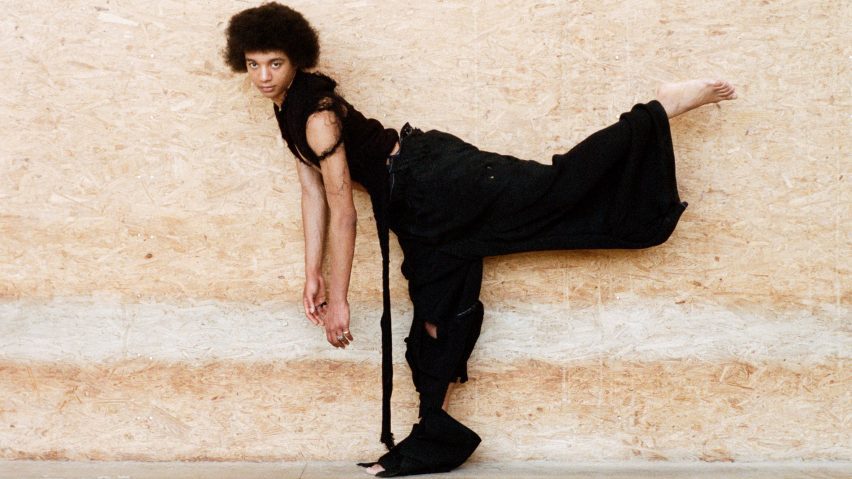
Ten fashion and technology projects by students at University of Arts Linz
Dezeen School Shows: a collection of garments made from plant-based leather and food waste is included in Dezeen's latest school show by students at the University of Arts Linz.
Also featured is a knitwear collection that investigates the properties of knitted fabrics and a fashion collection informed by gaming.
University of Arts Linz
Institution: University of Arts Linz
Course: Fashion and Technology
Tutors: Ute Ploier, Christiane Luible-Bär, Karin Krapfenbauer and Sander Hofstee
School statement:
"Fashion and Technology is a future-oriented bachelor and master programme that combines fashion with research focusing on sustainability and inclusivity.
"The course is aimed at designers who want to shape and explore the future of fashion – that means fashion with an attitude instead of fast fashion, the use of experimental materials and designing for bodies beyond binary codes.
"Our students use technologies as creative tools to break new ground in fashion.
"More than 40 international experts lead practice-oriented workshops in fashion design, styling, creative robotics, digital strategies, soft wearables, biomaterials, weaving and experimental knitting design among others.
"Students participate in international field trips, photo shootings, shows and exhibitions. The bachelor's degree lasts for six semesters and the master's degree lasts for four semesters."
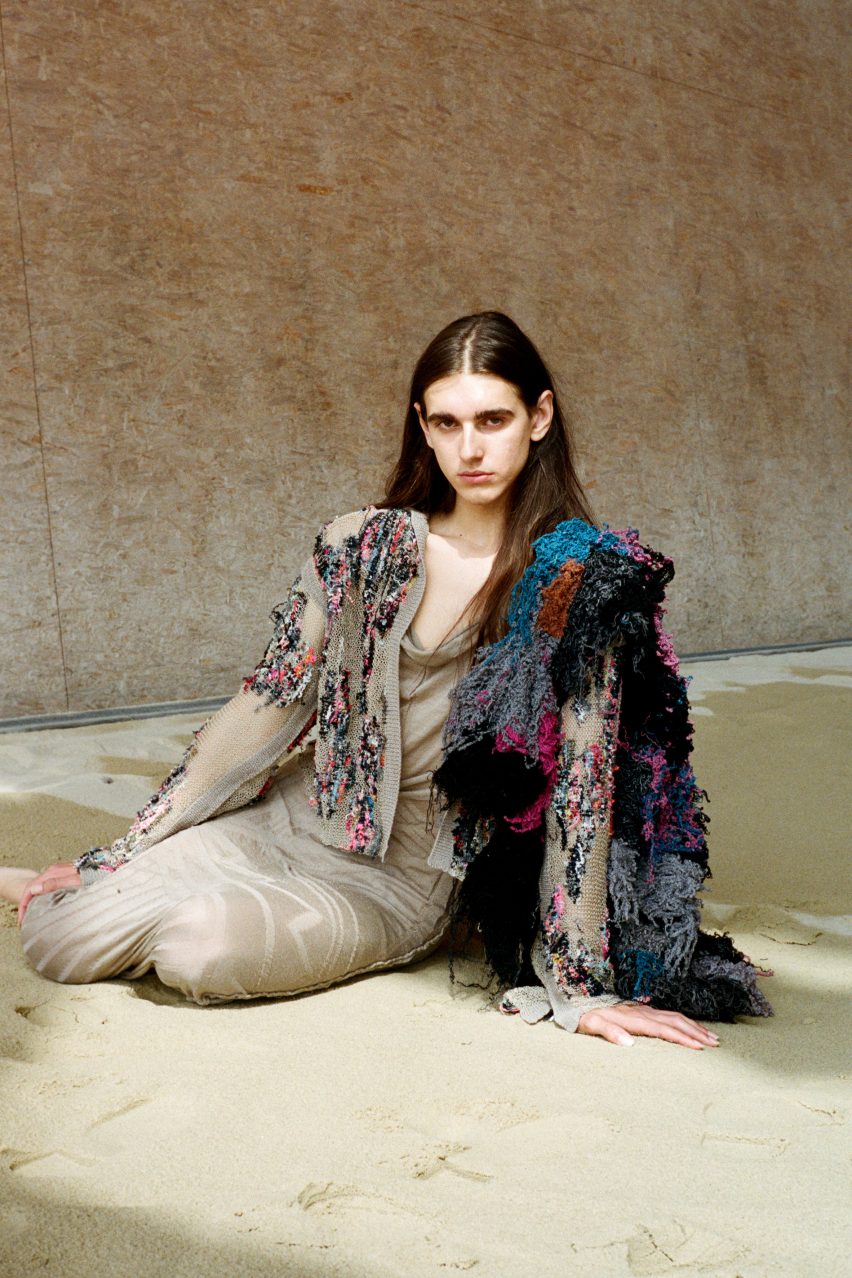
From waste to wow by Marilies Luger
"In this project, industrial textile waste such as thread scraps and faulty knitted fabrics are turned into flamboyant and extravagant one-of-a-kind pieces, challenging our ideas of value and waste.
"The knit designs created are reminiscent of the softness of mosses and the structures of lichens. Both are essential components of our ecosystem and serve as bioindicators of its health condition.
"The project translates this image into textile structures that gradually cover, envelope and adorn the human body."
Student: Marilies Luger
Email: marilies.luger[at]kunstuni-linz.at
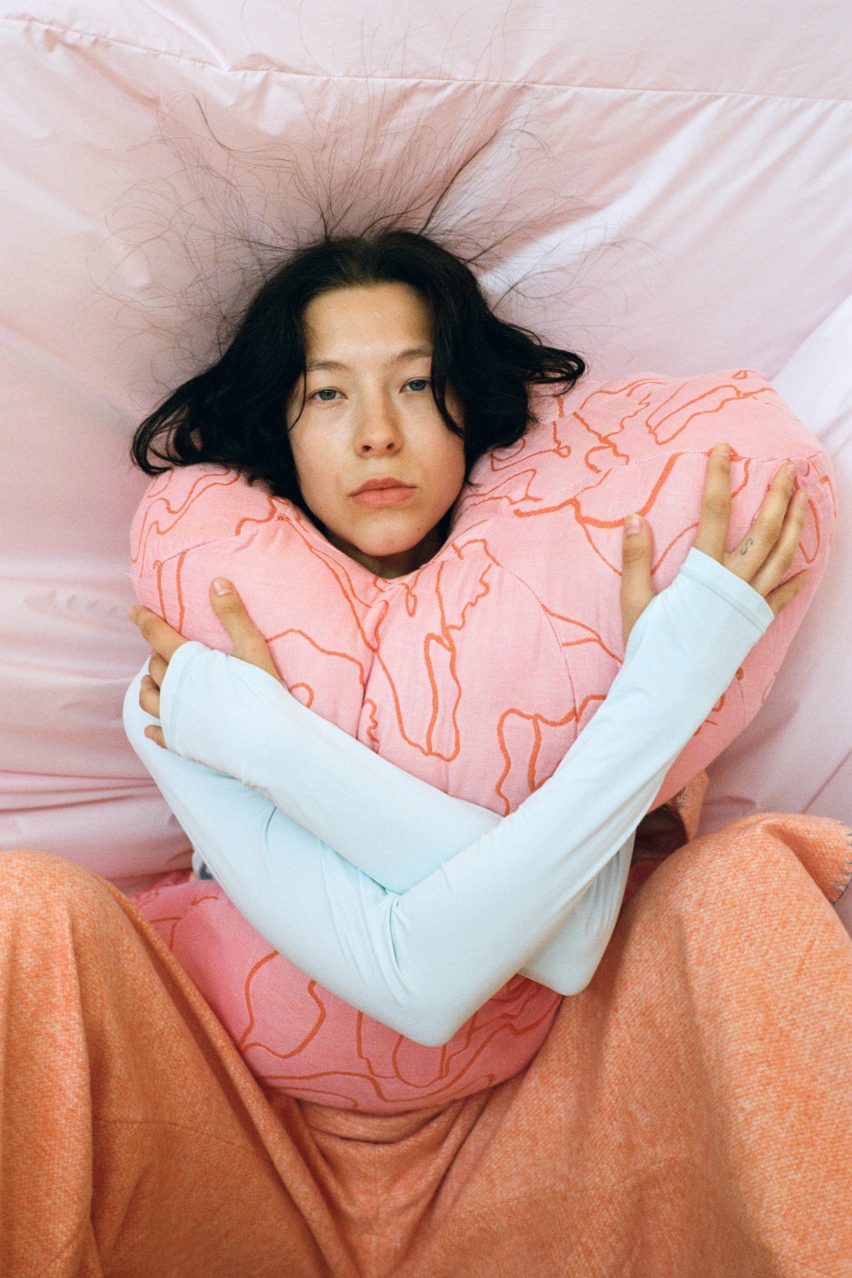
Hold by Antonia Möltgen
"In response to growing social anxiety and increased social distancing, this project uses the method of deep pressure therapy to promote human relationships and provide calm through clothing.
"Inspired by the soothing effect of hugs, three-dimensional soft sculptures were designed.
"Möltgen uses digital applications to develop patterns and adapt them to the body, as well as analogue casting processes to create unique wearable objects."
Student: Antonia Möltgen
Email: antonia.moeltgen[at]kunstuni-linz.at
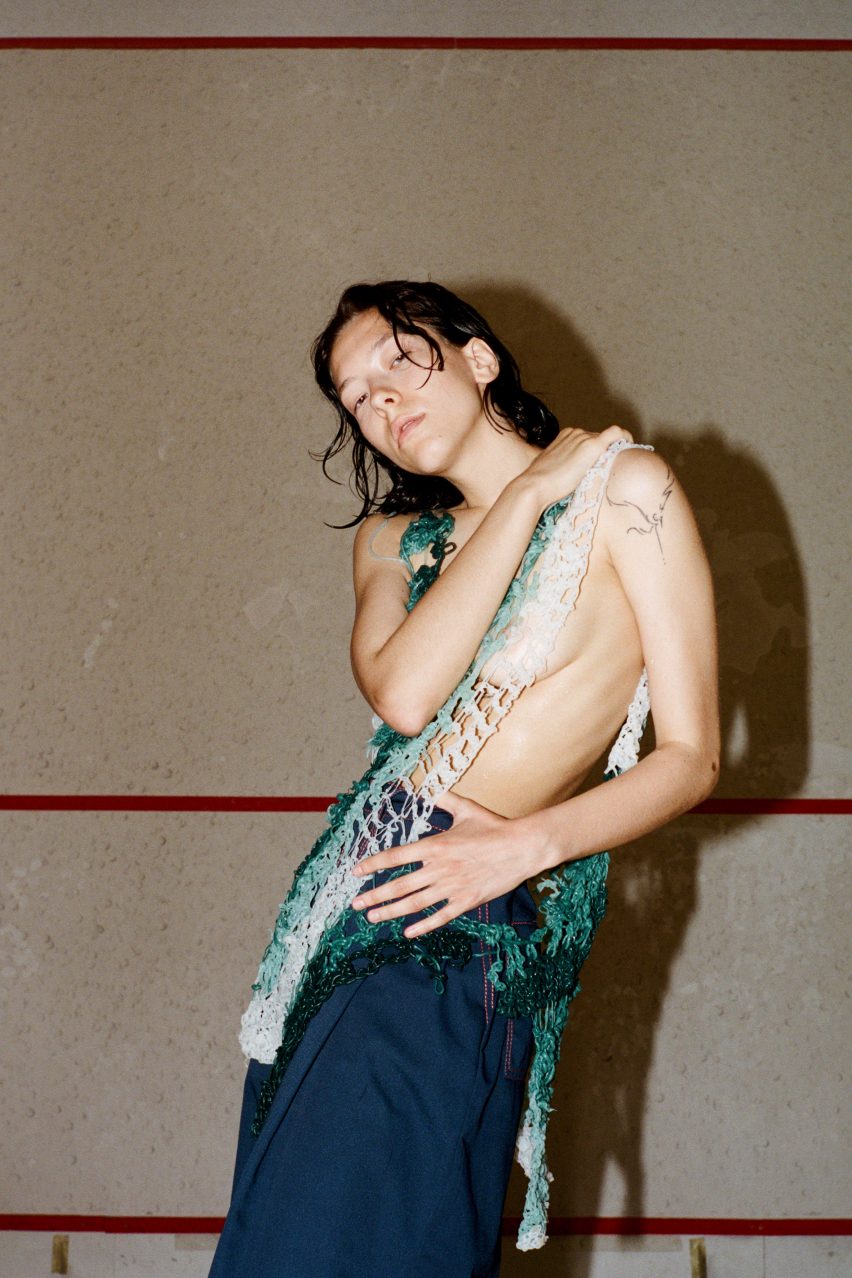
Fiume by Selina Stangelmaier
"With its rapid growth and ability to offset CO2, brown algae contributes to a healthier climate. For her collection, Stangelmaier used brown algae to create experimental yarns, prints and coatings.
"Stangelmaier explores the potential of an innovative material and its possible impact on the fashion industry. The collection's shapes and colour range are inspired by the element of water."
Student: Selina Stangelmaier
Email: selina.stangelmaier[at]kunstuni-linz.at
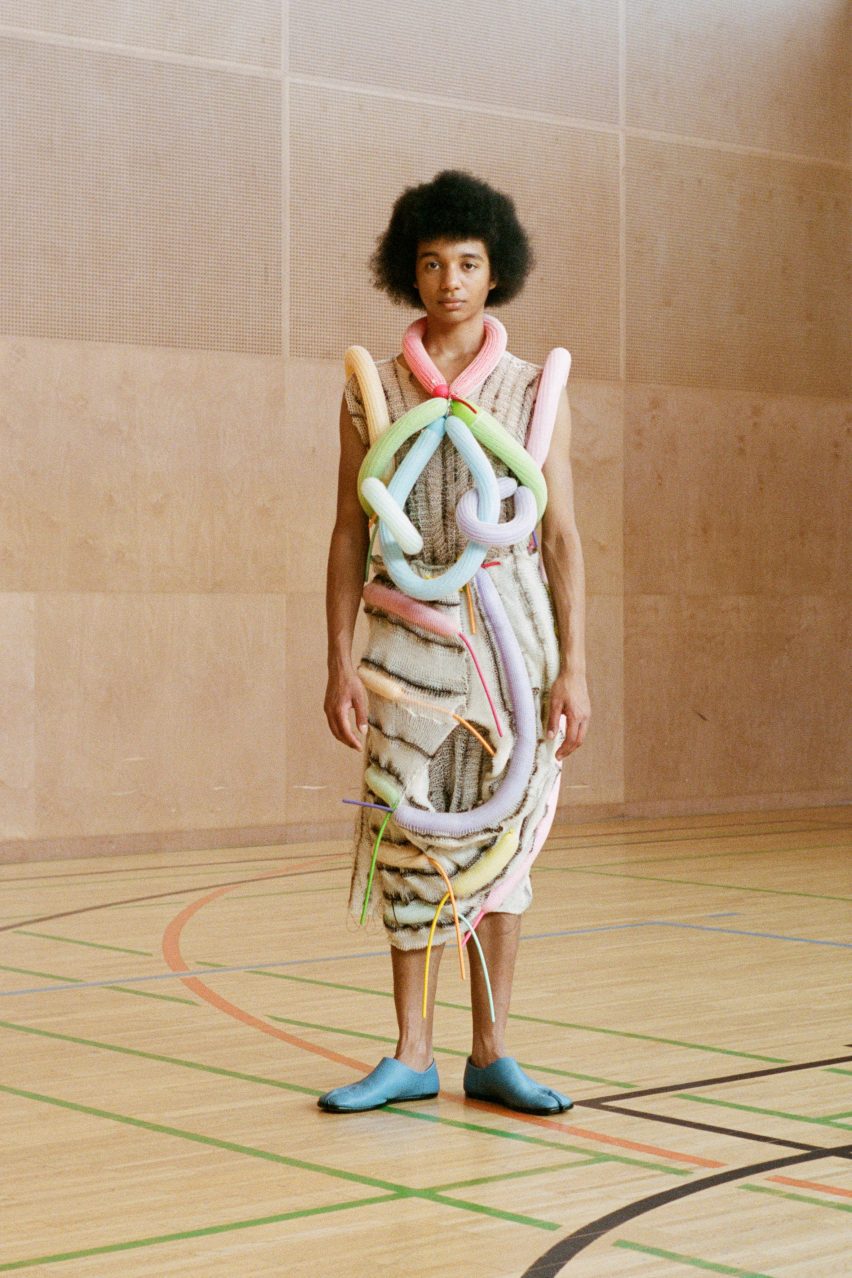
Cissy by Peter Fellner
"In this project, queer appropriation of heteronormative dress codes and traditions are contrasted, mixed and challenged.
"Colourful balloons and human hair are combined in an imaginative knit design resembling a transformed version of a traditional pinstripe pattern.
"AI is used to create digital prints picturing physical desires and interactions. Inflatable phallic objects humorously create cross-overs between body extensions and couture."
Student: Peter Fellner
Email: peter.fellner[at]kunstuni-linz.at
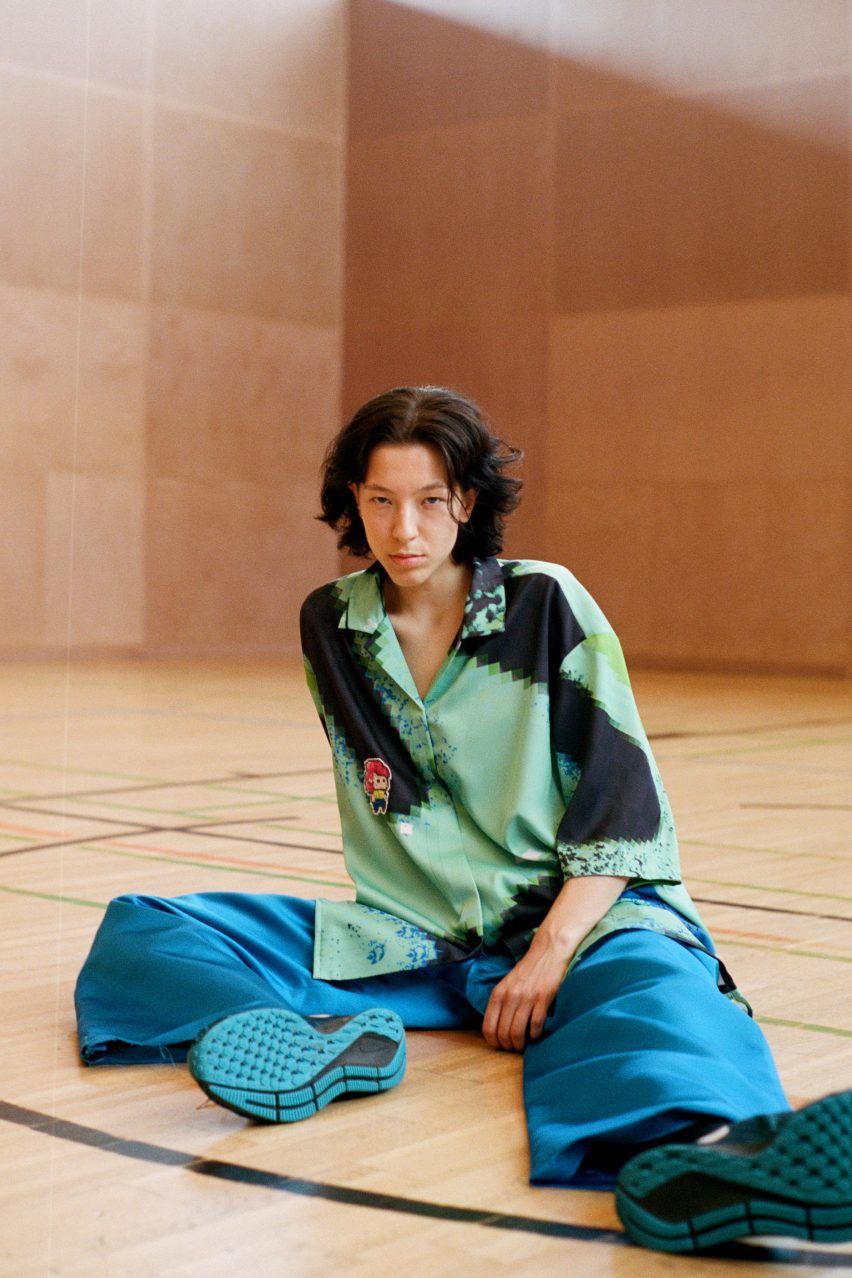
Soft Bodies by Sandra Kallay
"Sandra Kallay's collection is inspired by the aesthetics of the gaming world and the protective aspect that this virtual universe provides for her.
"She translates the process of character design from the digital into the analogue world by imitating the methods of texturing, 3D modelling and simulation using various analogue design tools.
"The project reflects the development stages of avatars in computer games – from a flat to a complete 3D version."
Student: Sandra Kallay
Email: sandra.kallay[at]kunstuni-linz.at
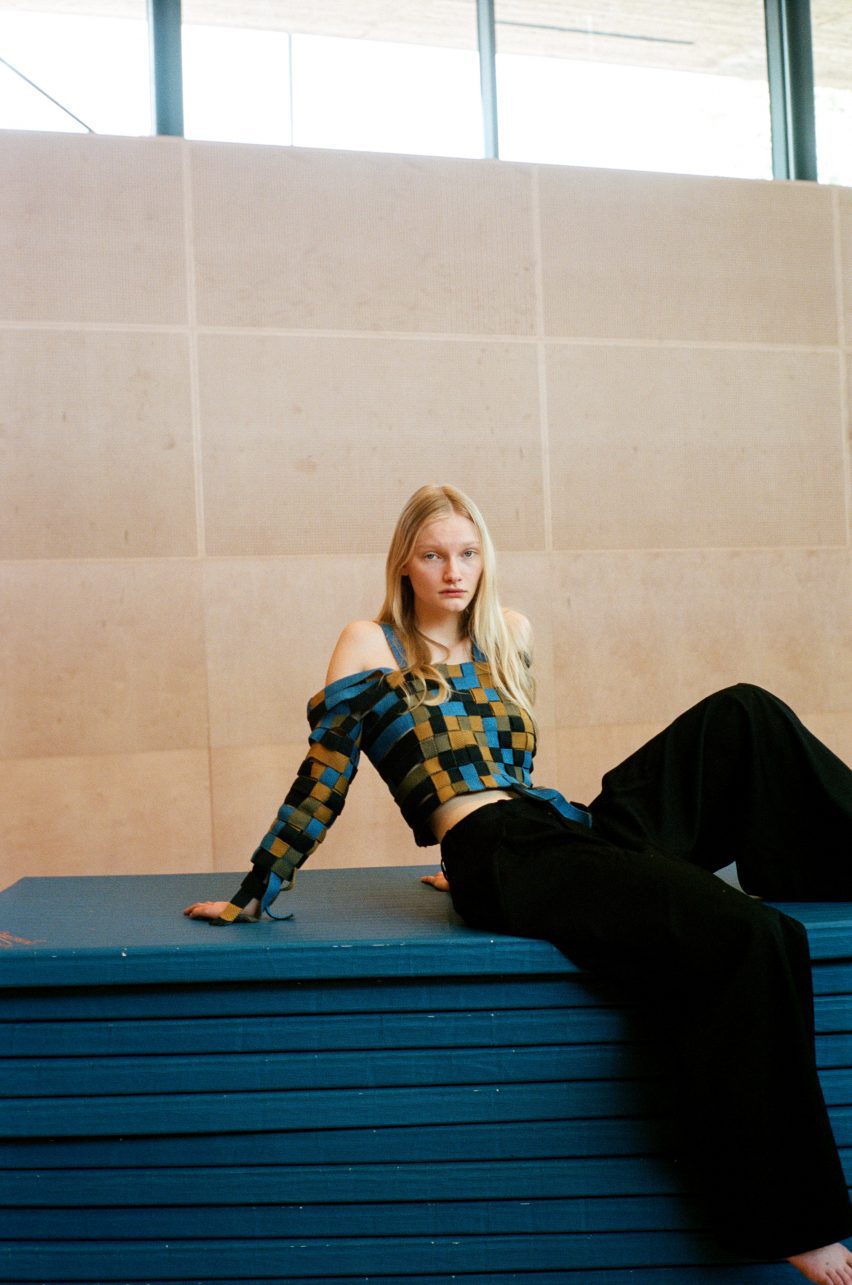
Textile-ID by Mira Haberfellner
"From 2025, digital product passports for clothing will be mandatory in the EU – this inspired Mira Haberfellner to explore the communicative capabilities of clothing.
"Textile-ID develops a new way of representing data in 2D through a unique identification number materialised as a knitted fabric.
"Digitally readable codes are translated into knit patterns that enable designers and producers to communicate with wearers. Consumers are provided with detailed information about a product, such as materials used, production conditions and ecological footprint."
Student: Mira Haberfellner
Email: mira.haberfellner[at]kunstuni-linz.at
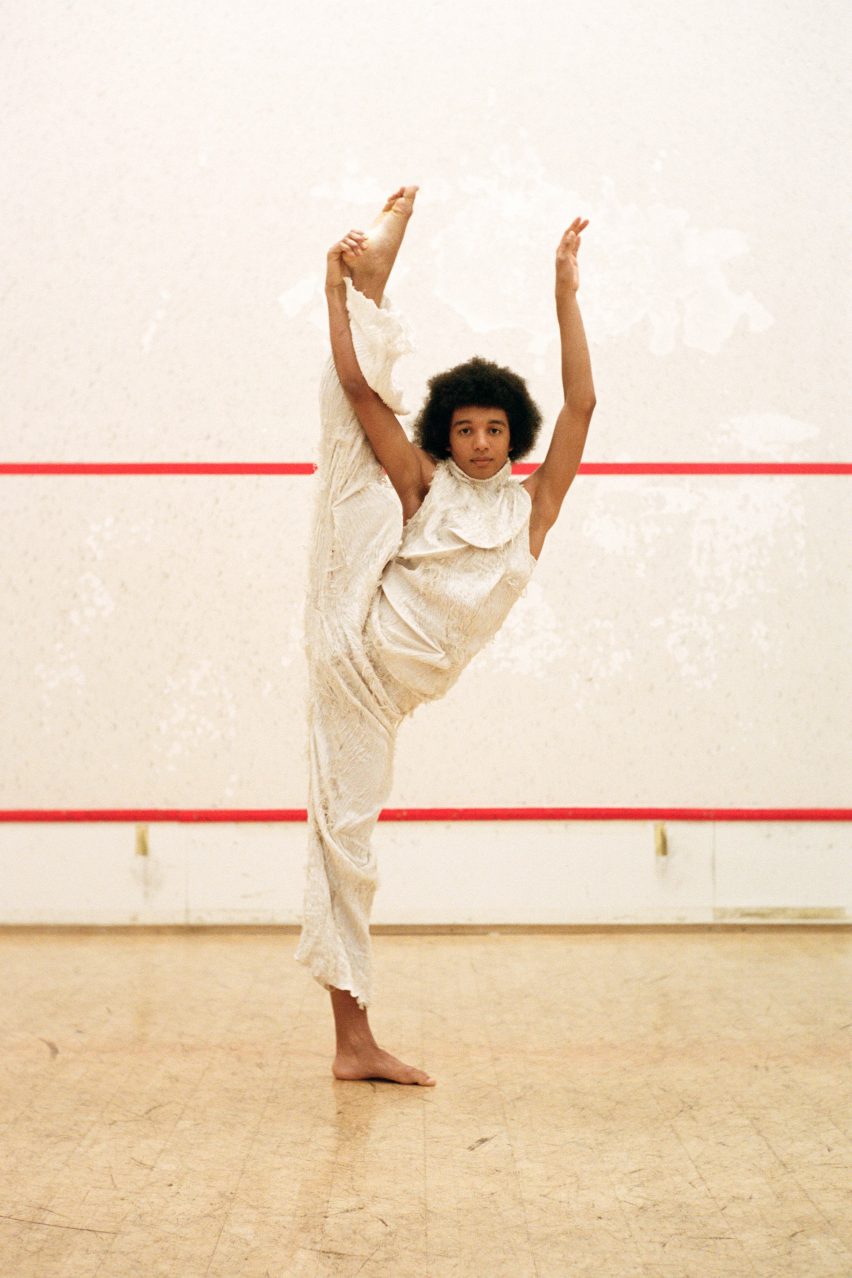
Emotion by Teresa Fröhlich
"Teresa Fröhlich created a reactive garment that reflects the emotional world of the wearer through interaction between textile and body.
"This intensifies the communication between wearer and clothing to a deeper level. Floats and quadruple weaves give the material a texture, which reacts to movement through its unique structure and elasticity."
Student: Teresa Fröhlich
Email: teresa.froehlich[at]kunstuni-linz.at
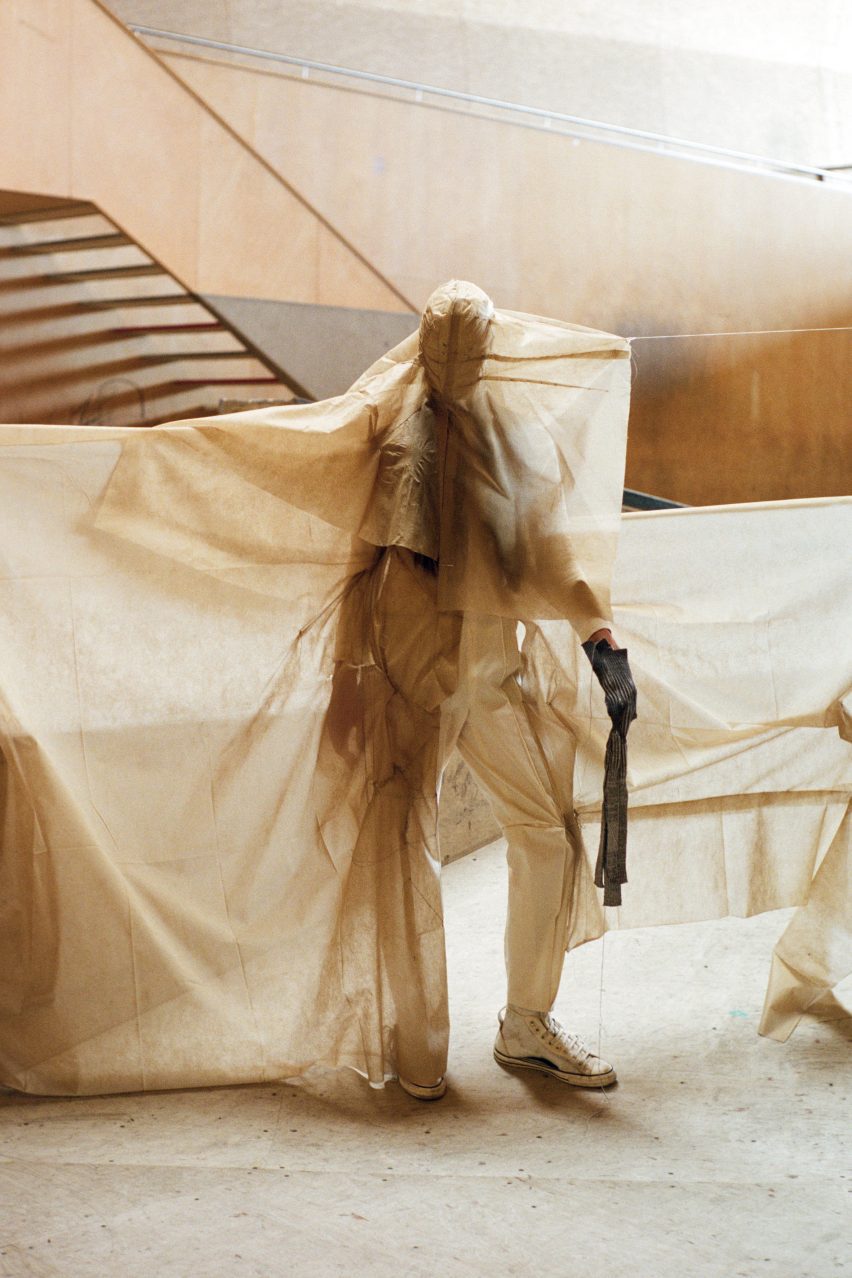
Staring Constantly by Toni Alberti
"This project encapsulates the collected dark nostalgia of a generation that grew up online, who are starting to feel that they are being consumed by images.
"This generation that feels thar virtual experiences break into their perception.
"Dealing with digital images, experimenting with 3D programmes and trying – and failing – to translate artificial images into real ones, Alberti creates constructions from folded paper."
Student: Toni Alberti
Email: toni.alberti[at]kunstuni-linz.at
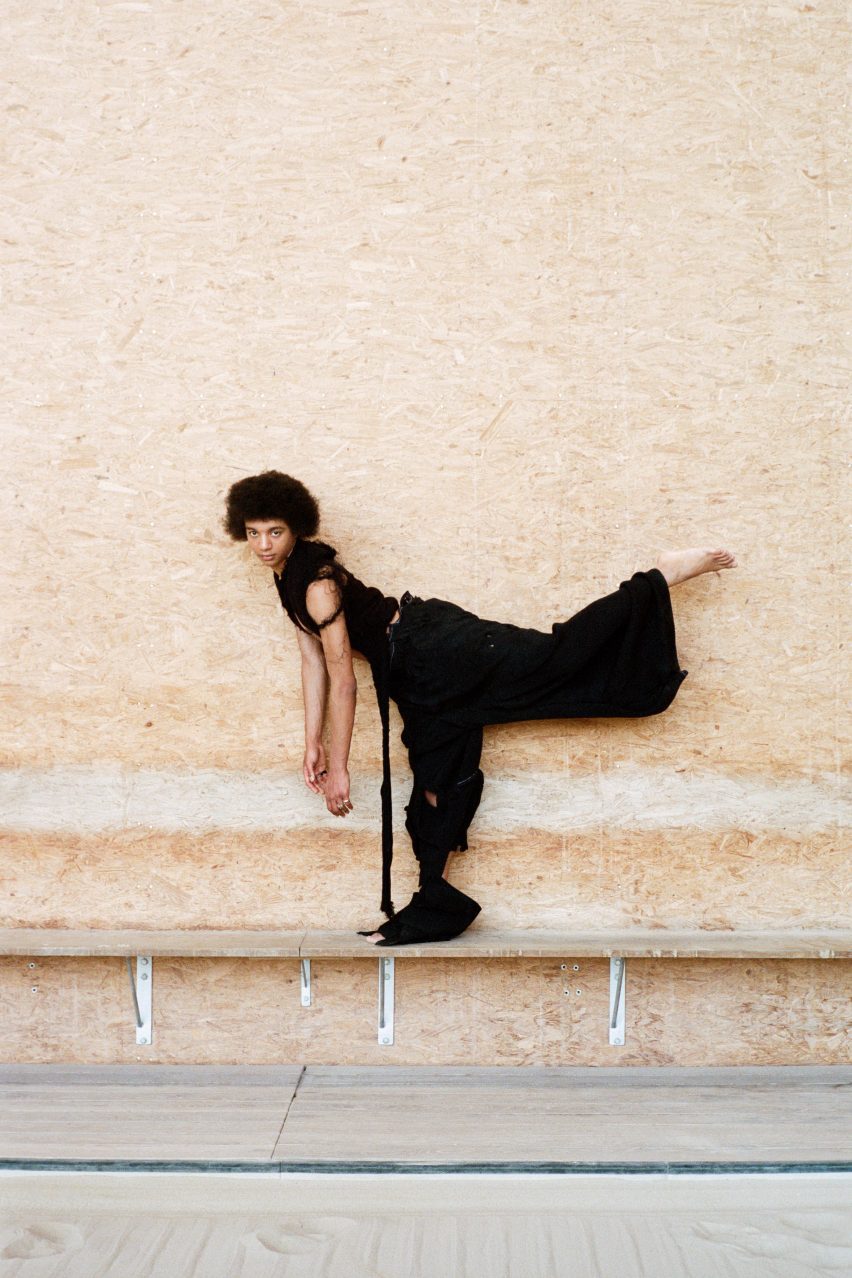
Tension by Mert Oezdemir
"In his knitwear collection, Mert Oezdemir explores the different material properties of yarns and knitted structures. When heated, tensions are created in the knitted fabric by contracting or puffing up.
"From this combination arises new textures, resulting in a new physicality in the fashion pieces themselves."
Student: Mert Oezdemir
Email: mert.oezdemir[at]kunstuni-linz.at
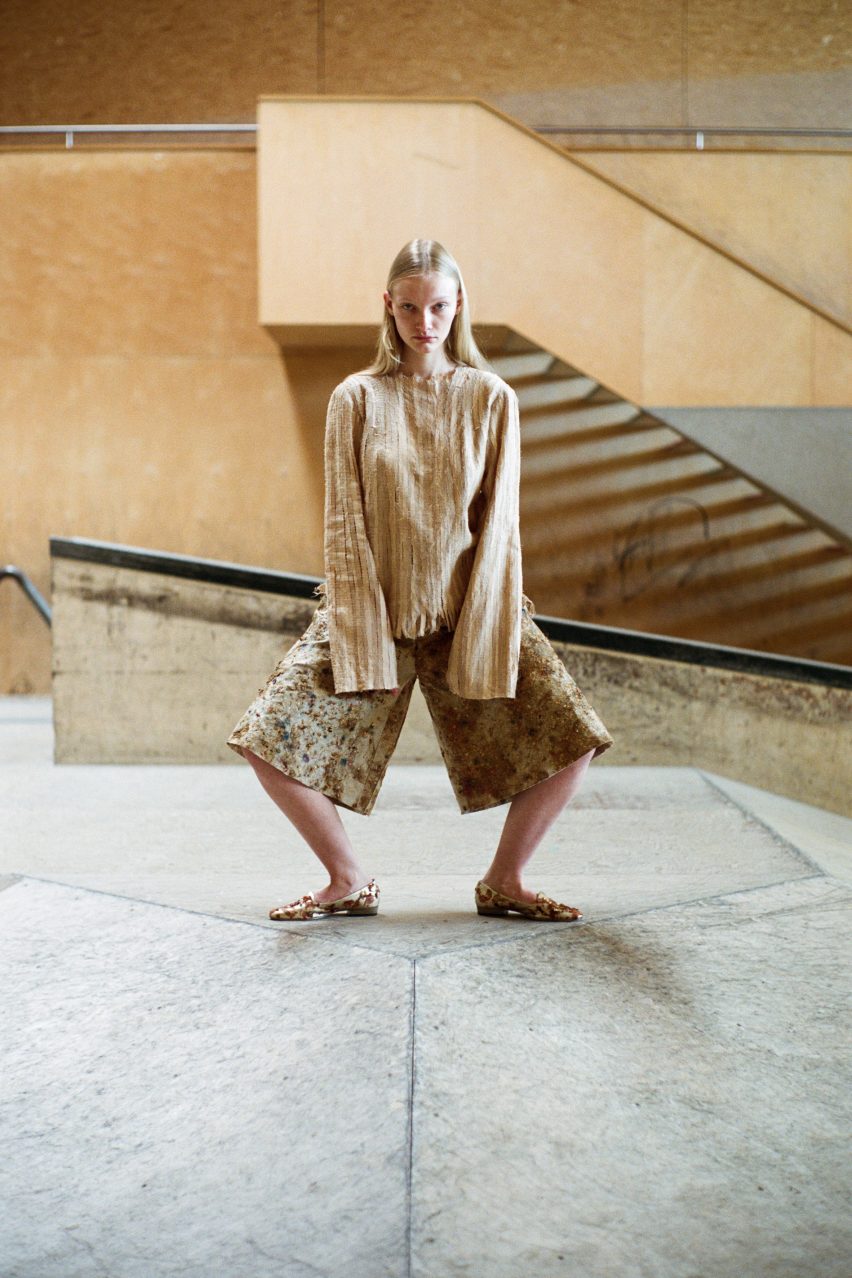
Culinary Turn by Sandra Axinte
"How can clothing look or be created in a world of scarce resources?
"Sandra Axinte envisions a future where every resource is valuable and clothes take shape in the kitchen using local, eco-friendly, renewable ingredients.
"Food waste turns into passionate colours, plant-based leather grows in a warm bath of tea and sugar, fruit and vegetable peels in combination with fibres become alternative materials.
"Recipes are translated into clothes and by carefully washing, peeling and precisely cutting the individual ingredients, and a wearable menu is created."
Student: Sandra Axinte
Email: sandra-laura.axinte[at]kunstuni-linz.at
The photography is by Anna Breit.
Partnership content
This school show is a partnership between Dezeen and University of Arts Linz. Find out more about Dezeen partnership content here.